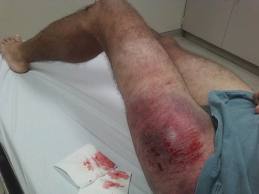Trauma professionals, particularly physicians, tend to take vital signs for granted on patients who are admitted to the hospital. And we tend to assume that our patients won’t ask questions, either. Unfortunately, they usually don’t.
“Routine” vital signs tend to get measured by the nurses once a shift. But think about that for a minute. In the US, the typical shifts run from 7 am to 3 pm, 3 pm to 11 pm, and 11 pm to 7 am. This means that at some point in the night, they will be disturbed to take their blood pressure and pulse. At least! And what if they need to have a neuro exam, pulse checks, or to have that beeping pulse oximeter hooked up?
And even though the shift runs from 11 pm to 7 am, does that mean the vitals will be take at the beginning or end of shift? No way! The nurse has to receive report for a safe handoff and get organized at the start of the shift. And how many patients does he or she have? They may not be able to check vitals on everybody until after midnight. And what if vitals are ordered to be taken more than once a shift? How can any patient get decent sleep?
Bottom line: Once again, think carefully about the orders! It’s no wonder some of our elderly patients sundown when they are admitted to the hospital. How can anyone get a good night’s sleep there?
Don’t just reflexively write for a frequency. Think about how often your patient really needs to be disturbed, especially at night. If they are recovering uneventfully from an orthopedic procedure, why bother them at all at night? And nurses, make it your responsibility to advocate for your patient and bring up these crazy orders so they can be fixed.



